Blog & Latest Updates
Fly Fishing Articles
Insects by Common Name


Ameletus (Brown Duns) Mayfly Nymph Pictures
Classification
Kingdom
Animalia (Animals)
» Phylum
Arthropoda (Arthropods)
» Class
Insecta (Insects)
» Order
Ephemeroptera (Mayflies)
» Family
Ameletidae (Brown Duns)
» Genus
Ameletus (Brown Duns)
I spent (Spent: The wing position of many aquatic insects when they fall on the water after mating. The wings of both sides lay flat on the water. The word may be used to describe insects with their wings in that position, as well as the position itself.) ages trying to identify this one but ultimately couldn't narrow it down to species. I'm guessing it's either a species that has not yet been reported from Idaho or a species with some variation in characteristics not accounted for in the current key (Zloty 1997), which is only for Alberta but happens to contain all the species documented in Idaho except for one (which is rare and only in a different part o the state from this one).
Here are my raw notes from the microscope session:
8. Ameletus nymph (genus 100 % based on mouth parts under microscope)
1. This is probably a species with the nymph either not described yet or not reported in Idaho (or Alberta).
2. There is a key to the species of nymphs in Alberta (Zloty 1997) which includes all but one (A. tolae) of the species listed in Idaho by IDFG (https://idfg.idaho.gov/species/taxa/8607), and A. tolae is only listed from one drainage in north-central Idaho. So my specimen should be in that key. However, it doesn’t fit any of them.
1. The antennae are pale with brown at the apex (Apex: The uppermost, outermost, or culminating point; the tip.). This doesn’t fit any of the species they described.
2. The labrum (Labrum: The platelike structure forming the roof of the mouth of insects; the upper lip.) is almost completely dark brown, maybe a bit paler toward the apex (Apex: The uppermost, outermost, or culminating point; the tip.).
3. Following the key in Zloty 1997 basically rules out every species reported in Idaho except for tolae, which would be outside its range:
1. Couplet 1 : There definitely aren’t strong ganglionic markings on sternites (
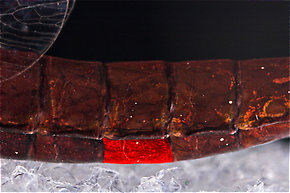
One sternite of this Isonychia bicolor mayfly spinner is highlighted in red.
2. Couplet 3 : Posterior (Posterior: Toward the back of an organism's body. The phrase "posterior to" means "in back of.") margins of sternites (

One sternite of this Isonychia bicolor mayfly spinner is highlighted in red.
3. Couplet 6 : Mesal (Mesal: Toward the middle.) gill extension present, but pretty slim… similar to Fig. 23B or 23G —> 7
4. Couplet 7 : Obviouly gos to 8
5. Couplet 8 : Small size and time of year rules out velox, tergite (
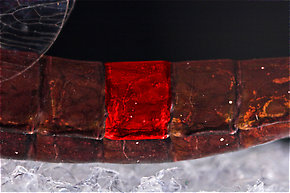
One tergite of this Isonychia bicolor mayfly spinner is highlighted in red.
6. Backtrack to call the mesal (Mesal: Toward the middle.) gill extension “well developed” —> 9
7. Couplet 9 : Tail coloration obviously —> 10
8. Couplet 10 : Supposing it’s a small specimen of a “larger species” leads to 11, in which femora (
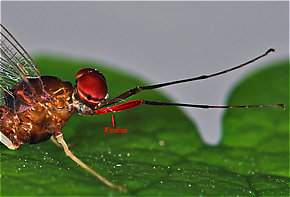
The femur of this Isonychia bicolor mayfly spinner is highlighted in red.
9. Couplet 12 : Sternites (

One sternite of this Isonychia bicolor mayfly spinner is highlighted in red.

One tergite of this Isonychia bicolor mayfly spinner is highlighted in red.
1. cooki: Antenna and labrum (Labrum: The platelike structure forming the roof of the mouth of insects; the upper lip.) colors don’t fit. Mesal (Mesal: Toward the middle.) extension should be larger and tracheation lighter, to be this species.
2. sparsatus: Antenna and labrum (Labrum: The platelike structure forming the roof of the mouth of insects; the upper lip.) colors don’t fit. Mesal (Mesal: Toward the middle.) extension should be larger. Postero-lateral (Lateral: To the side.) spines should be very prominent, not barely noticeable.
3. suffusus: Also bad fit to antenna and labrum (Labrum: The platelike structure forming the roof of the mouth of insects; the upper lip.) colors, mesal (Mesal: Toward the middle.) extension, and especially gill tracheation.
This mayfly was collected from Green Lake Outlet on August 4th, 2020 and added to Troutnut.com on August 20th, 2020.
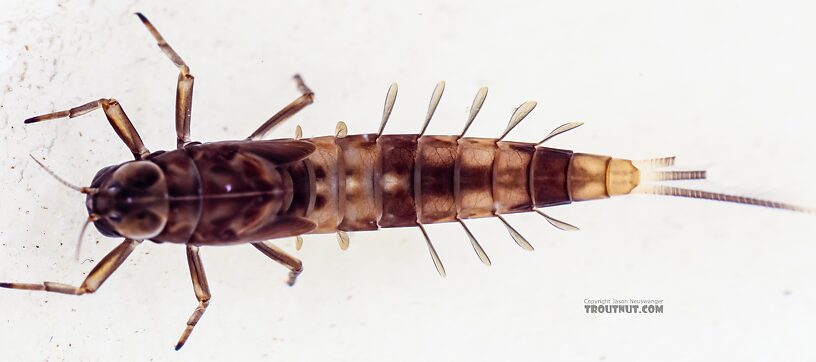
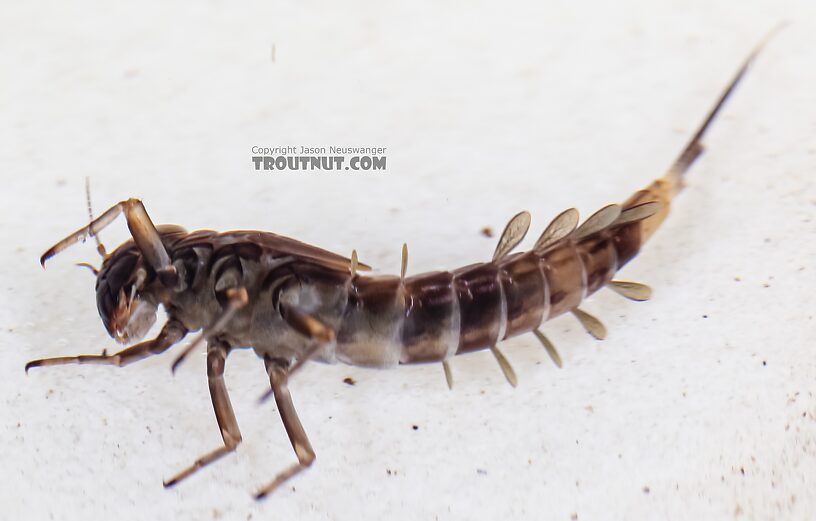
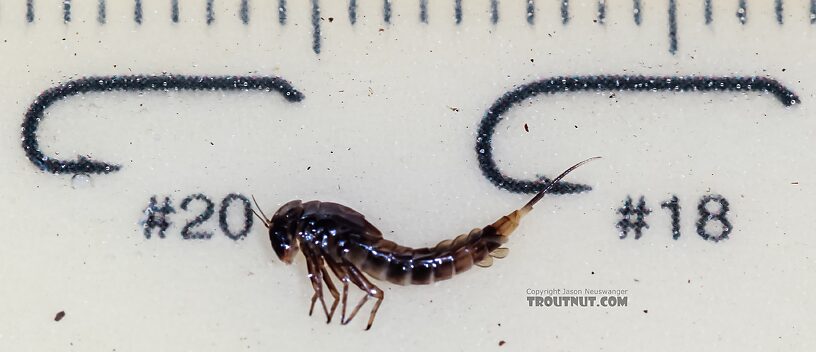
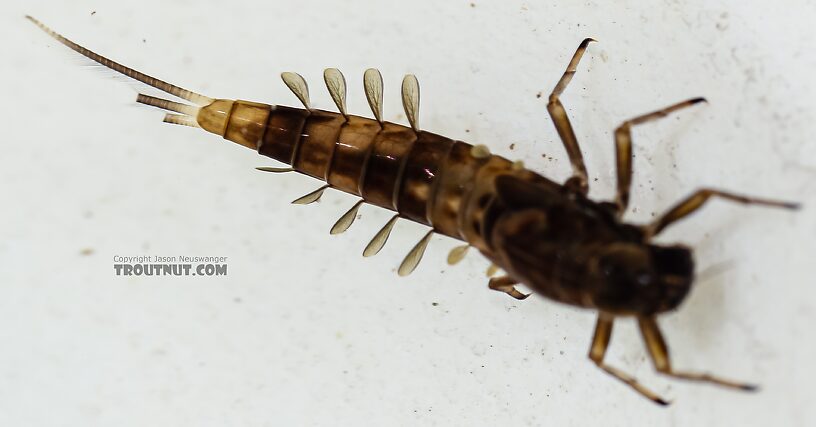
In another specimen with intact tails, all three were about the same length.
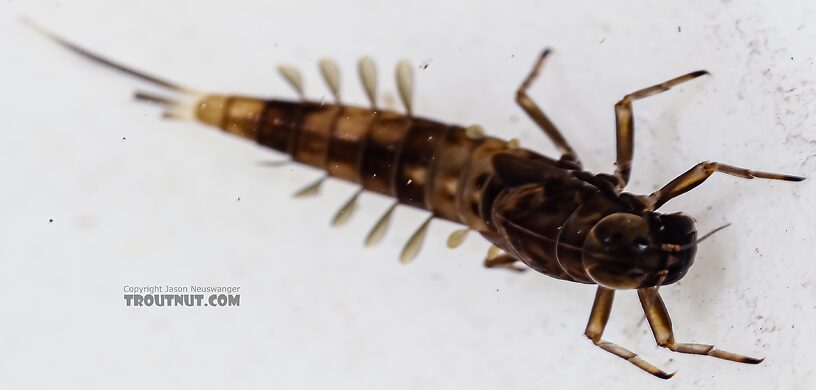
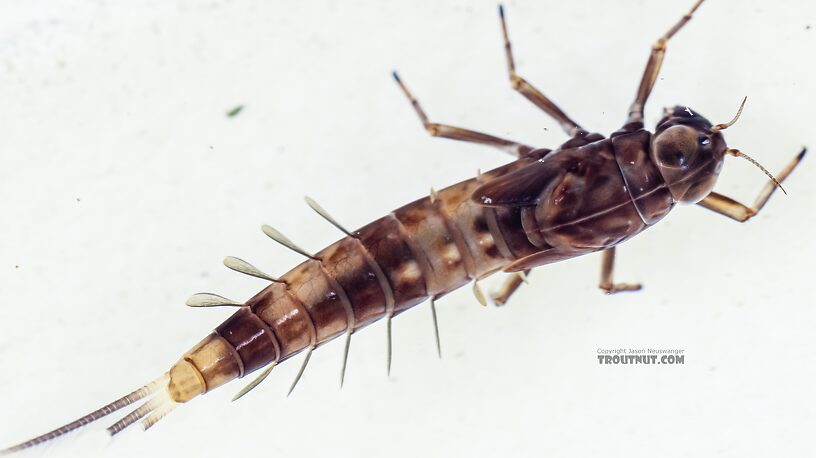
Start a Discussion of this Nymph:
Top 10 Fly Hatches
Top Gift Shop Designs
Eat mayflies.
Top Insect Specimens
Miscellaneous Sites
Troutnut.com is copyright © 2004-2024 Jason
Neuswanger (email Jason). See my FAQ for information about use of my images.
 privacy policy
privacy policy
